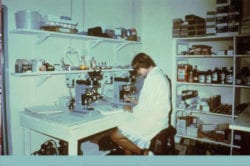
Nitric oxide at 160–200 ppm is easy to use, appears to be well tolerated, and might be of benefit in pregnant patients with COVID-19 with hypoxic respiratory failure


Vaginal delivery is appropriate in mild cases and caesarean section should be reserved for women with severe respiratory problems, where delivering the baby will allow improved ventilation
Vaginal delivery in SARS-CoV-2-infected pregnant women in Northern Italy: a retrospective analysis

NOTE: Information and guidelines may change rapidly. Check in with listed references in ‘Learn More – Primary Sources’ to best keep up to date
SMFM and Society for Obstetric and Anesthesia and Perinatology (SOAP) have released COVID-19 guidelines for obstetric professionals, including anesthesiologists. The following are highlights. The complete document link can be found in ‘Learn More – Primary Sources’. The guideline is not proscriptive with an understanding that they “may not apply in your clinical setting”
Women with Confirmed Covid-19 Or PUI
Health Care Workers Caring for Women Who are Positive for SARS-CoV2 or PUIs
…should use N95 (or facemasks if N95 is not available), eye protection, gloves, and gowns during the second stage of labor, in addition to other personal protective equipment that may be typically indicated for labor and delivery
Surgical drapes could be used as an additional physical respiratory droplet barrier during the second stage and at delivery

Note: The authors state that “Uncertainty about the risk of intrapartum mother-to-child transmission by vaginal delivery ” was the reason COVID-19 pneumonia was considered an indication for cesarean delivery
Note: None of the patients progressed to severe pneumonia

Please log in to ObGFirst to access this page